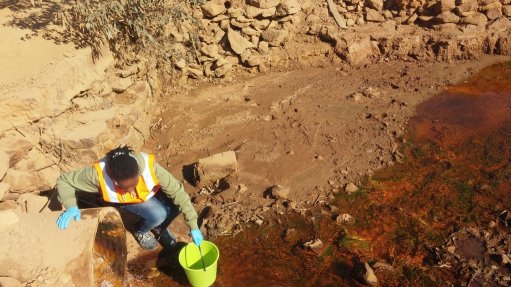
ECONOMIC TRANSFORMATION Engineering innovation could transform mining assets into new business opportunities
Engineering expertise can be used to generate socioeconomic gains for mining companies, particularly in jurisdictions that are dependent on the finite business of mineral extraction, states global engineering and infrastructure advisory firm Aurecon, an adviser to the African mining sector.
Aurecon client director for resources – Africa, Dr Eduard Vorster, states that “mining is big business, but it’s also susceptible to big change”. He notes that companies that want to succeed in the increasingly scrutinised mining environment will need to leverage more than just traditional design and project delivery tools to succeed. “Today’s definition of ‘success’ has evolved beyond only meaning fiscal stability to also include being a contributor to a future-ready society.”
As such, mine closure and rehabilitation presents “one of the most difficult and often emotional, yet potentially most advantageous, opportunities for the mining sector globally”
.Vorster says closure and rehabilitation offer the mining industry the opportunity to become known for sustainability, rather than simply extraction “by envisaging the transformation of mining assets into new business opportunities past the end of a mine’s life”
.Engineers are key to this endeavour, he avers, as they will need to help clients design mines and plan their end-of-life transformations in a way that ensures they add value to the surrounding community beyond their original core business.
“We’re now asking whether we monetise mine closure? Imagine a future where mining compa-nies, government and communities work together, finding viable solutions that yield financial, social and environmental benefits. “Looking at each site as a blank canvas and imagining new opportunities presents a pathway to create assets that continue to perform long after their mining use is over,” Vorster proposes.
He says as and when the mining industry becomes receptive to asset transformation “we’re likely to focus on business opportunities beyond just the extraction of a commodity”.
Vorster cites the use of engineers in determining the best way to deal with mine water challenges – which often extend beyond a mine’s life – as an example, noting that this is an opportunity to rethink how water is being used in the mining process and even how the industry’s wastewater could benefit a water-scarce country like South Africa.
He postulates that engineering innovation could revolutionise the mine water aspect of a project for the benefit of both the project owner and the surrounding communities, adding that companies could also turn mines into power generating units to alleviate the continent’s energy security challenges, by designing mines to function as mini hydropower plants post-closure. This would generate income and boost energy supply for surrounding communities. Further, he proposes that employees of a mining facility could be re-equipped to ensure a sustainable economy for the facility’s host community.
Vorster stresses that these types of solutions will require partnerships between the mining industry, including its consultants, governments and mining communities. But, if implemented successfully, these initiatives could be the catalyst for real, lasting change and reinforce the importance of mining’s involvement in building successful societies.
“Looking forward, it’s those who grasp the notion of ‘business unusual’ that will forge the way to success amid the changing industry expectations,” he concludes.